With the iconic Wagoneer nameplate returning to production for the 2022 model year, a lot of people have been talking about how nostalgia will play a factor in the new full-size SUVs’ role within the Jeep lineup. We know Jeep® is marketing the Wagoneer and Grand Wagoneer as the ultimate premium extension of the American brand, by its series of touching marketing campaigns aimed to tug on the childhood memories of many fans of its original Wagoneer and Grand Wagoneer (SJ) models. But if you are a true SJ diehard like myself, you know that the all-new Wagoneer and Grand Wagoneer are a far different cry from the original SJ vehicles.

The Wagoneer nameplate came to life in 1963 and was the first four-wheel-drive (4×4) vehicle mated with an automatic transmission and pioneered the modern SUV segment as we have come to know it today. Ahead of its time the original SJ offer optional independent front suspension, a thing called Quadra-Trac® which would be the first full-time automatic 4×4 system, and would go on to spawn a series of other successful Jeep vehicles like the Gladiator pickup (which would later become the J-Series) and the first-ever Jeep to carry the legendary Cherokee nameplate.

In 1984 the SJ was reimagined to become the first-ever luxury SUV with the Grand Wagoneer. The Grand Wagoneer would give buyers an unheard combination of standard features like leather seating, air conditioning, AM/FM/CB stereo radios, sound insulation for a quieter cabin, and a handsome faux wood-grain exterior trim. Growing up in the mid-1980s to the mid-1990s, you would be hard-pressed not to see a successful family in a movie or television who did not drive one of the iconic Grand Wagoneers.
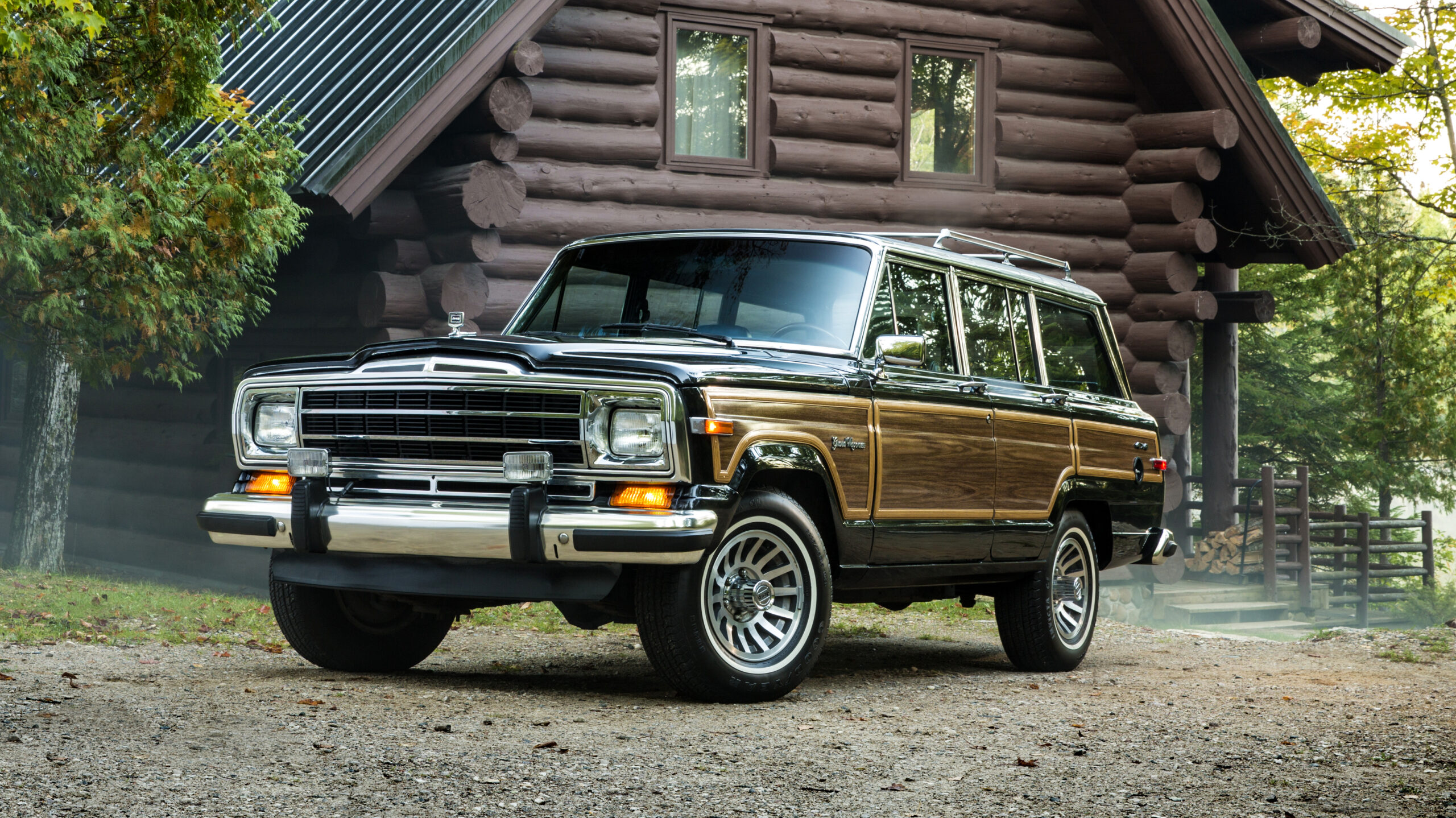
After a 29-year production run, the Chrysler Corporation who had recently purchased the rights of the Jeep brand through its acquisition of the failing American Motors Corporation (AMC), decided to end the production of the SJ. The last Grand Wagoneer SJ, which was painted Hunter Green Metallic, rolled off the Toledo Assembly Plant line on June 21st, 1991.
https://www.facebook.com/AmericanMotorsMovie/posts/1127976337332777
Replacing the Grand Wagoneer in the Jeep lineup was the all-new Jeep Grand Cherokee (ZJ), a vehicle that AMC had been hard at work on long before the purchase by Chrysler. AMC intended the ZJ to be the replacement for the highly successful Cherokee (XJ), with the original project name of the ZJ being dubbed “XJC”.

At the time, as the smallest automaker in Detroit, AMC wanted to speed up its product development process to make sure that the company could better compete against the likes of its competitors. The AMC would use a new process aided by the advancements in computer-aided design (CAD) software, allowing for potential issues to be resolved faster, reducing engineering costs, and making the engineering process more productive. The effort would prove to be so successful that after Chrysler purchased AMC in 1987, it adopted the new AMC product development process for the entire company.

In 1989, Jeep showed off its Jeep Concept 1 show car hinting at the design path direction of its next vehicle. Although Jeep was looking to release the vehicle by the 1990 model year, Chrysler CEO focused resources to update the companies successful line of minivans, leaving the XJC to be pushed back until a 1992 release date.
During that time, Ford launched its new midsized Explorer model which kicked off the SUV craze of the 1990s. Sales of the compact XJ continued gaining popularity and caused Chrysler’s executive team to rethink its decision to replace the Cherokee and instead decided to push the larger “Grand Cherokee” as it was now dubbed to be a fitting replacement for the aging Grand Wagoneer. Chrysler management even pre-approved a Dodge variant of the new Grand Cherokee if the Jeep dealer body should struggle with the launch of the new SUV.
At the 1992 North American International Auto Show (NAIAS) in Detroit, a Poppy Red-colored 1993 Jeep Grand Cherokee Laredo 4×4 driven by then Chrysler President, Bob Lutz and Detroit mayor, Coleman Young made a 6-mile drive down Jefferson Avenue from the newly completed Jefferson North Assembly Plant to the steps of Cobo Hall before climbing them and crashing through a plate-glass window in the lobby to unveil the new Jeep to public and making it the first Chrysler-badged Jeep product.

The ZJ would go on to directly replace the SJ, ultimately wearing the Grand Wagoneer nameplate for the 1993 model year. That version of the Grand Wagoneer would feature standard equipment like a 5.2-liter 318 cubic-inch V8, a unique leather interior, and the Grand Wagoneer’s iconic faux wood-grain exterior trim. It would be dropped the following year, with roughly 6,400 units being produced.
Fast forward to today and we are now starting to see the fifth generation of the Grand Cherokee (WL) in Jeep owners garages, thanks to the launch of the all-new first-ever three-row Grand Cherokee L. The Grand Cherokee has become the most award-winning SUV nameplate in the world since its introduction in 1992 and has been one of the most successful nameplates in Chrysler history.
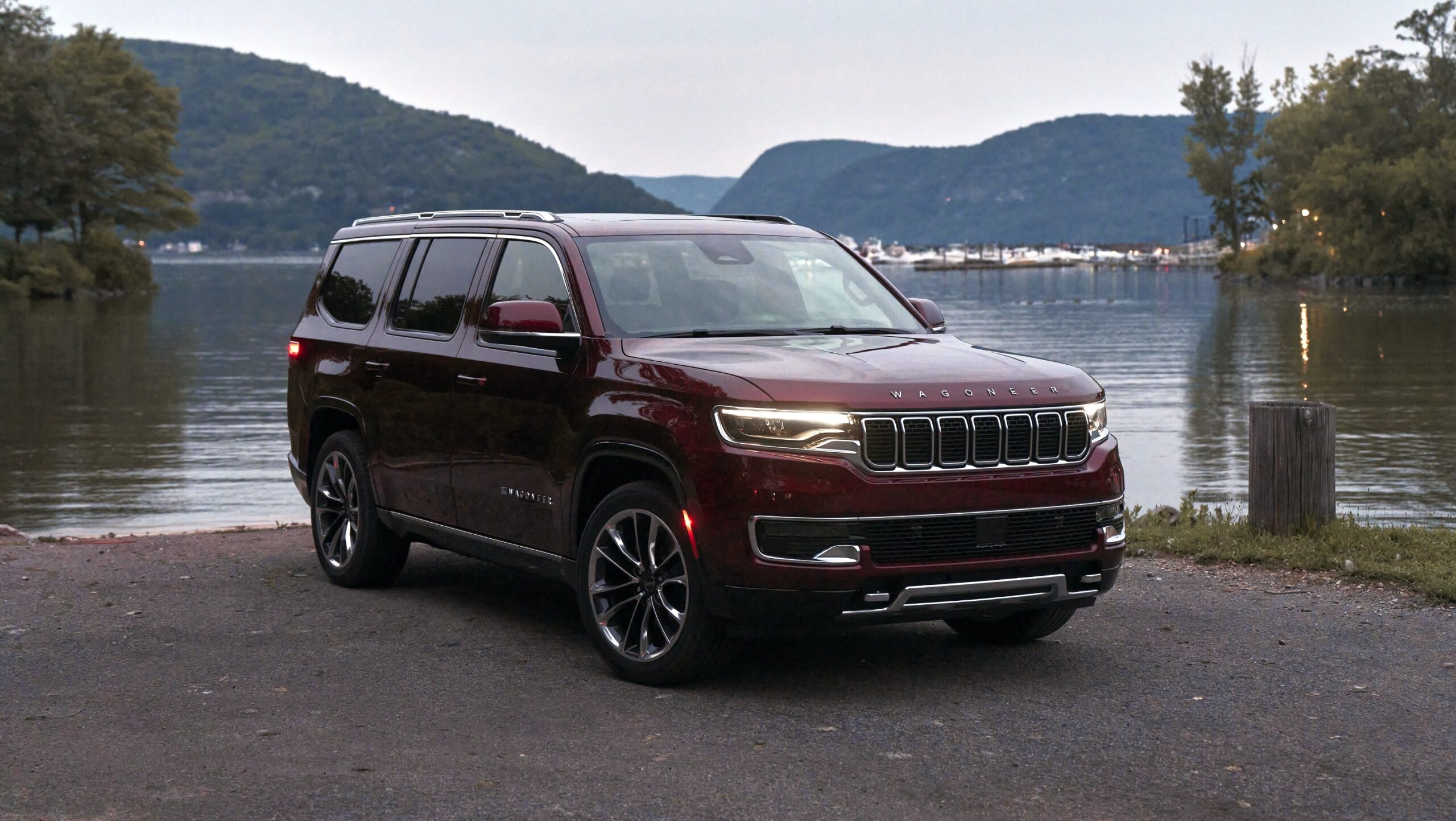
As the Jeep brand launches its re-introduction of the Wagoneer and Grand Wagoneer nameplates on the new WS-platform range of SUVs, a lot of the diehard fans of the SJ have criticized the new Wagoneer duo as not being retro enough and not hinting more at the traditional SJ models. However, those all-new models have little or nothing in common with the legendary SJ.
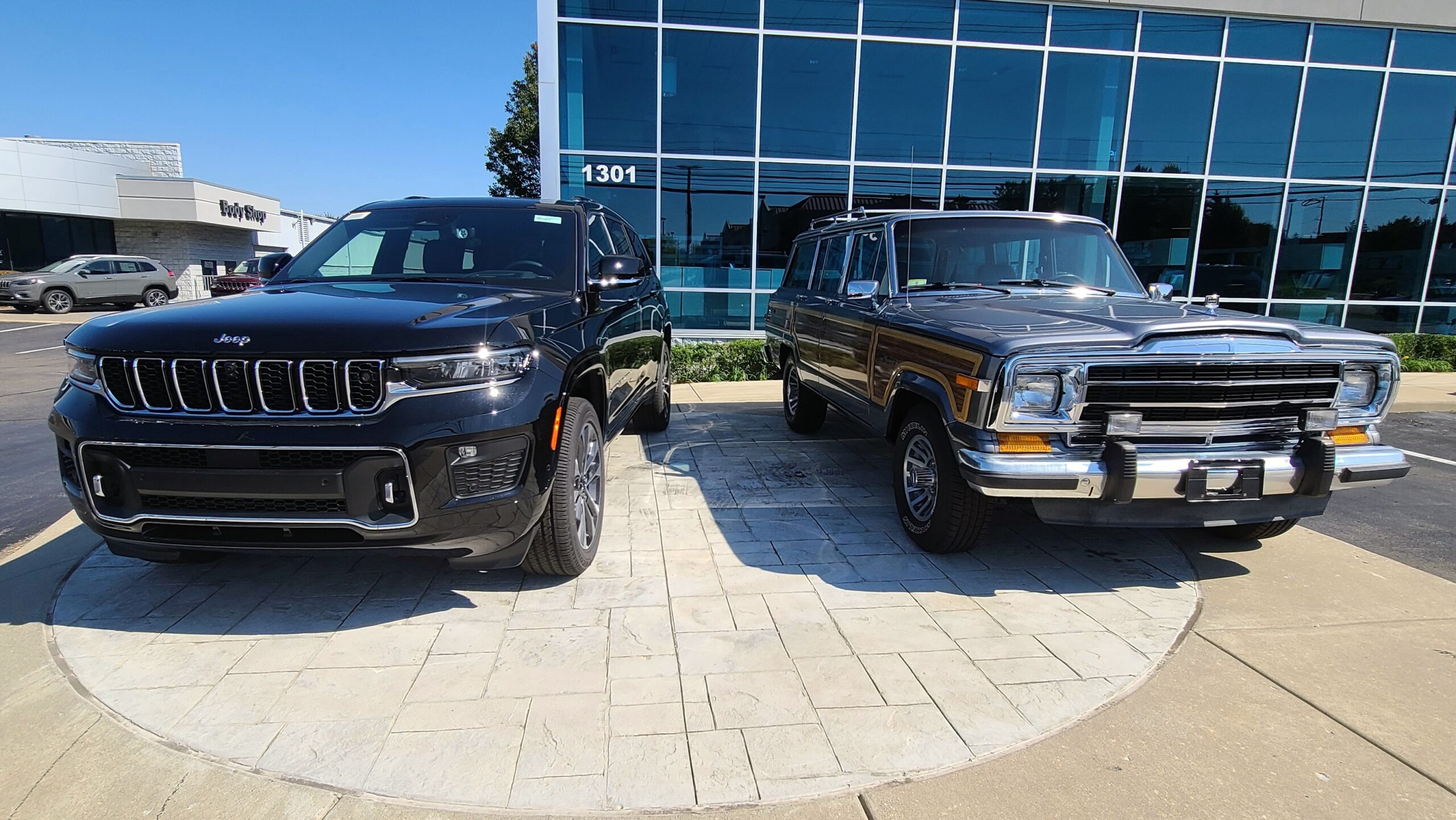
This past weekend, I was out on a lunch date with my fiancée when I happened to find myself at one of the local Jeep dealers (Rochester Hills Chrysler, Dodge, Jeep, Ram) staring at a brand-new 2021 Jeep Grand Cherokee L Overland conveniently parked next to a late-model Jeep Grand Wagoneer (SJ).
For those who have serious doubts about the Wagoneer heritage in the new Wagoneer duo, look no further than the all-new Grand Cherokee. While it’s been 30-years since the Grand Cherokee has replaced the SJ, you can tell that SJ blood is still alive in well in the all-new Grand Cherokee L.

Although the Grand Cherokee L is a bit larger than the original Grand Wagoneer, they are still roughly in the shadows of each other. The Grand Cherokee L does make better use of its longer wheelbase and offers a third-row, something the original Grand Wagoneer could only imaging having.
With the past 30-years bringing tons of advancements in safety and technology, the Grand Cherokee L Overland continues to feature a lot of the same luxurious awe that the Grand Wagoneer had when it hit the market in 1984. The leather seats are still there, except for now you have rich Nappa Leather in the Grand Cherokee L, where you have leather and velour seating surfaces in the Grand Wagoneer. Did I mention that the Grand Cherokee L has messaging seats for front row passengers available in the optional “Luxury Tech Group IV” package?
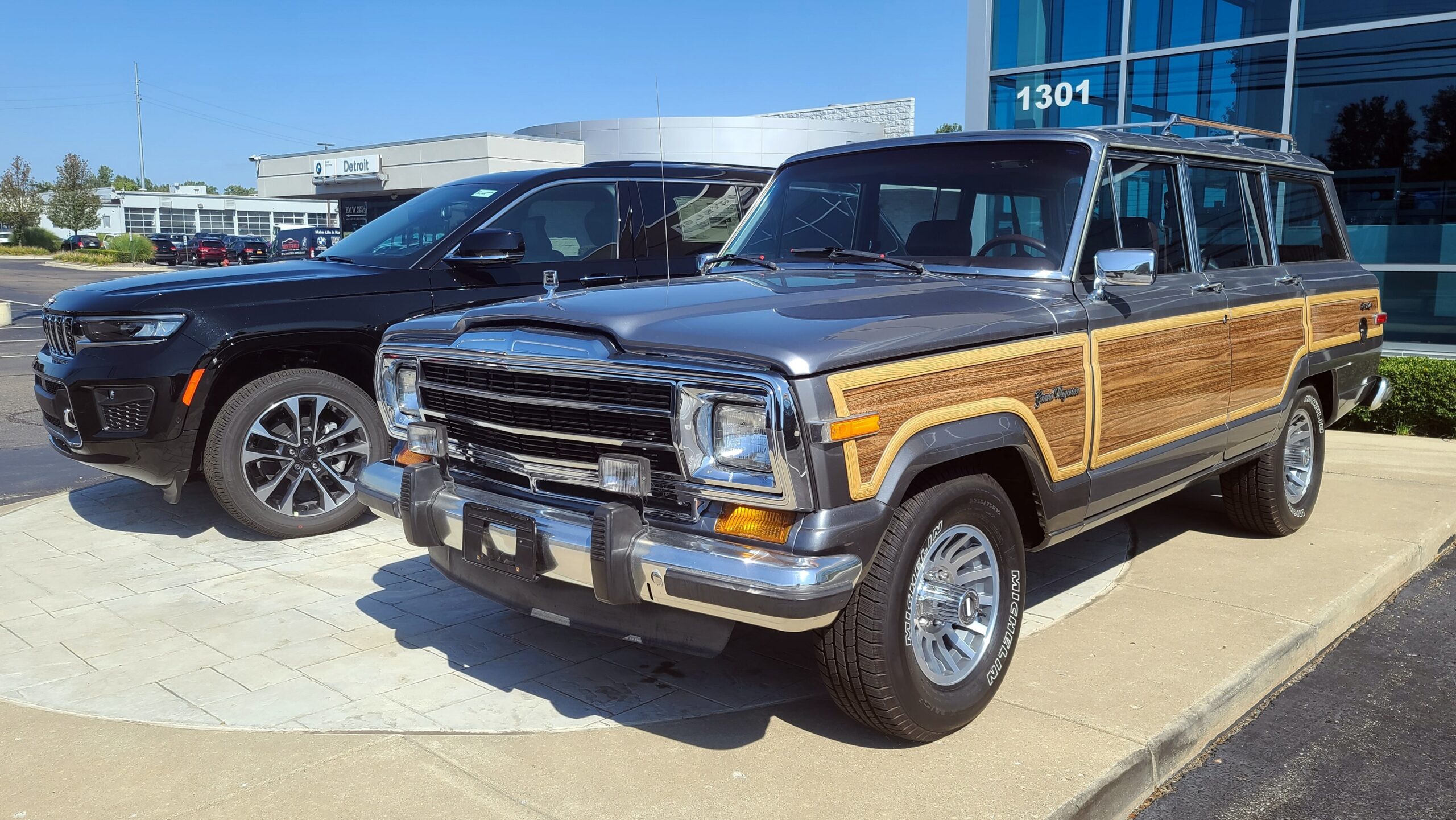
Instead of an AM/FM/CB radio with four AccuSound by Jensen premium speakers like the Grand Wagoneer, the Grand Cherokee L Overland features a 10.1-inch Uconnect 5 system with navigation and premium Alpine audio system with nine speakers, subwoofer, and 506-watt amplifier. Gone is the faux wood-grain in today’s world, instead, Grand Cherokee L owners can opt for a Gloss Black Roof and A-pillars to show a more upscale look.
A sunroof over the front occupants was available as an added option on the Grand Wagoneer and while that offered a taste of the outside for Grand Wagoneer owners in the mid-1980s to the early-1990s, it doesn’t compare to the massive CommandView dual-pane sunroof with a power sunshade that is standard on the L’s Overland trim.
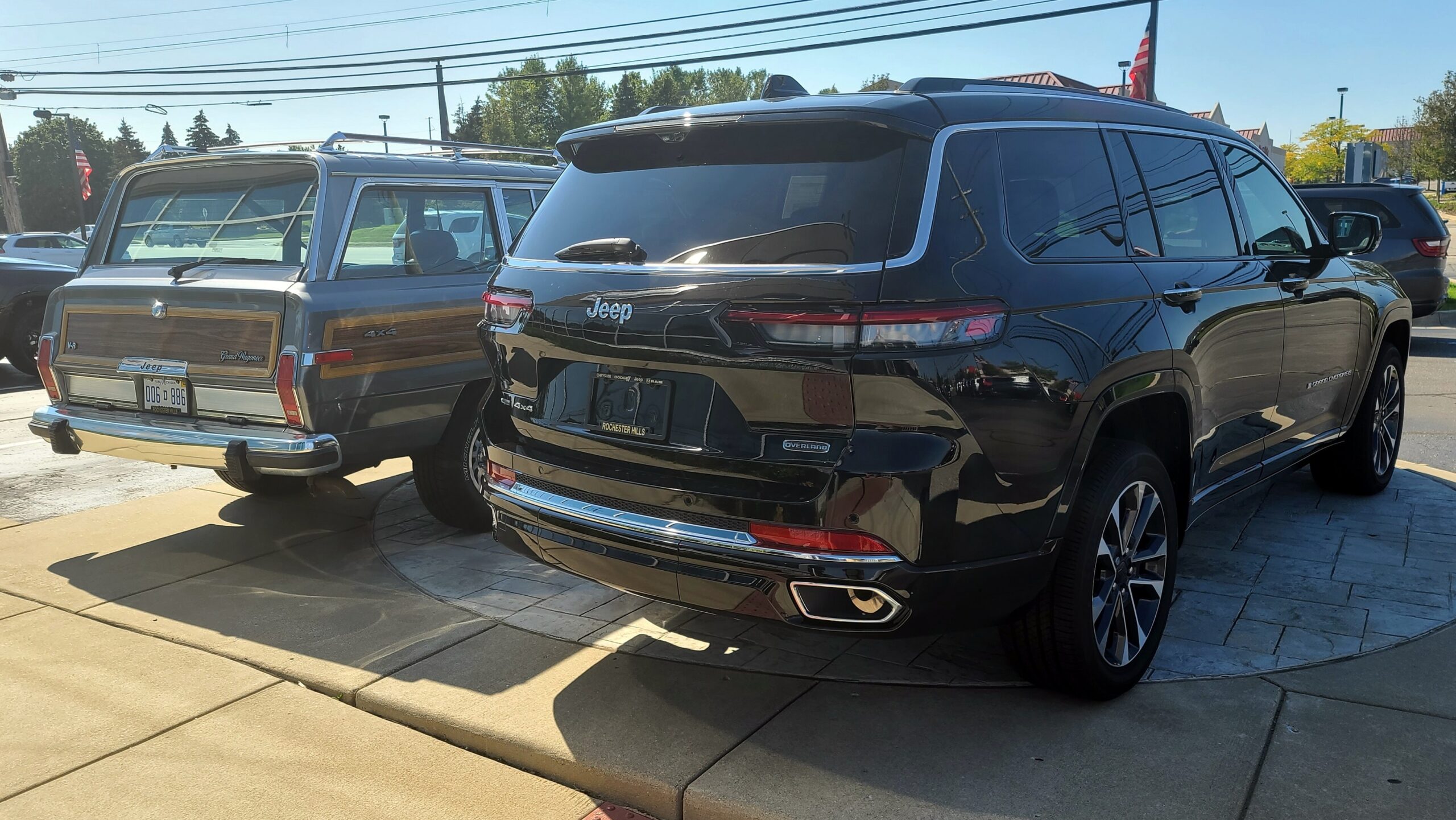
Both vehicles still offer plenty of chrome around both, fog lamps, and power budge hoods. Under those hoods, both vehicles offered standard 6-cylinder power with the Grand Wagoneer having a 4.2-liter AMC I6 producing 110 horsepower and 210 lb.-ft. of torque (offered from 1984 to 1986), and the Grand Cherokee L’s award-winning 3.6-liter Pentastar V6 delivers 293 horsepower and 260 lb.-ft. of torque. Both offer V8 options, with the Grand Wagoneer having a 5.9-liter AMC V8 making 140 horsepower and 280 lb.-ft. of torque and the Grand Cherokee L Overland being fitted with a 5.7-liter HEMI V8 delivering a robust 357 horsepower and 390 lb.-ft. of torque.
Grand Wagoneer SJ models came standard with a 3-speed 727 TorqueFlite automatic transmission sourced from Chrysler and paired with Selec-Trac 4×4 system, which used either the NP228 (open center differential) or NP229 (viscous coupling) transfer cases, depending on the year. The Grand Cherokee L Overland comes standard with 8-speed TorqueFlite automatic transmission sourced from ZF and paired with the Quadra-Trac II 4×4 system using an MP 3022 two-speed electronically shifted transfer case.
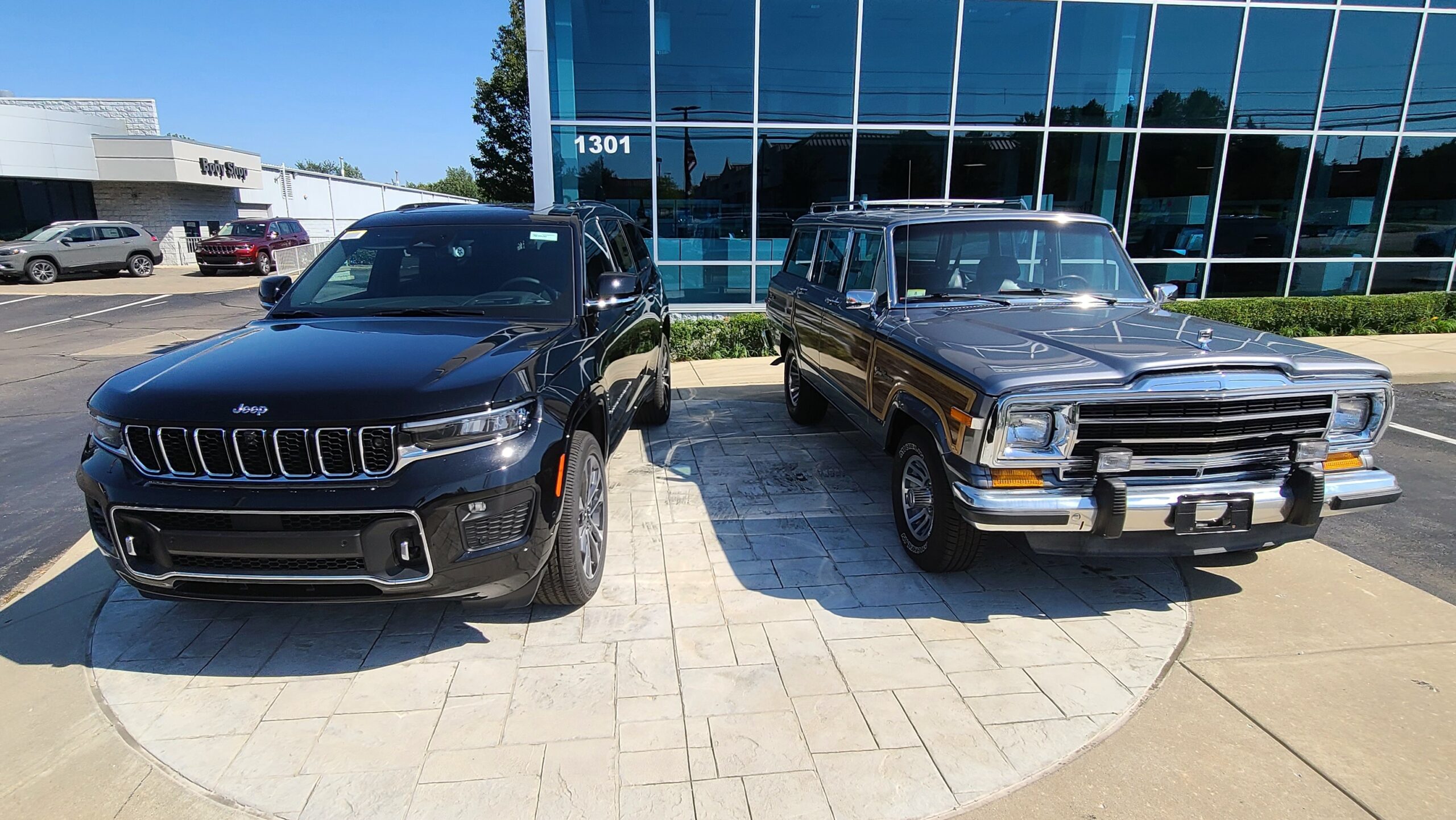
It’s hard not to see why the SJ continues to live on through the new Grand Cherokee L, despite the larger full-size ultra-premium offers which bear its name.
What do you think? Does the Grand Cherokee (WL) do a better job conveying the original Grand Wagoneer (SJ) heritage than the all-new Grand Wagoneer (WS)? Let us know in the comments below or in the MoparInsiders.com forums.
For those who are owners, potential owners, or fans of both the new Grand Cherokee and Grand Wagoneer, don’t forget to check out our dedicated websites to both vehicles. WLJeepForum.com and WagoneerForums.org
2021 Jeep® Grand Cherokee L Overland 4×4 (WL75) and 1990 Jeep Grand Wagoneer (SJ) Image Gallery:

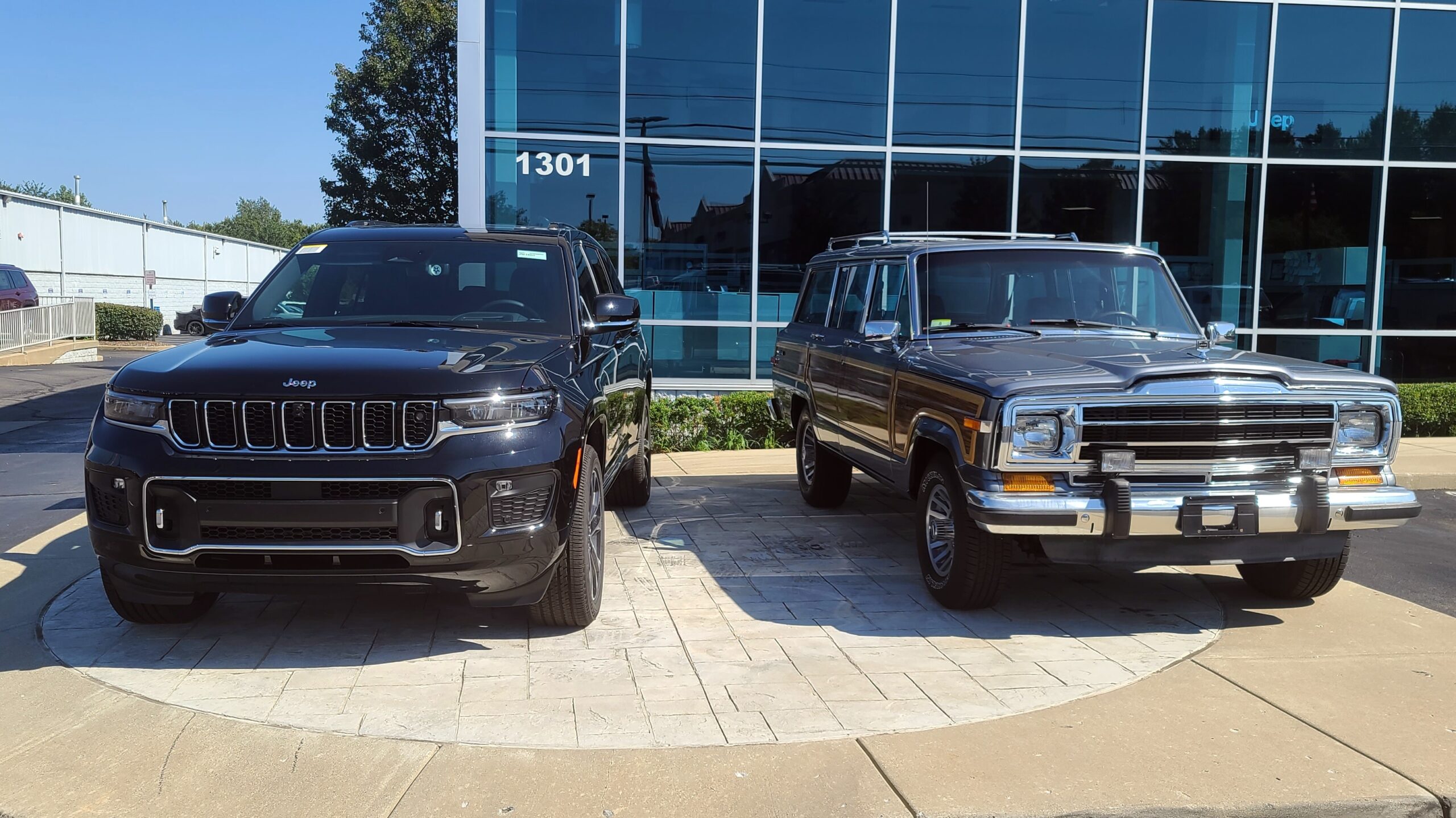
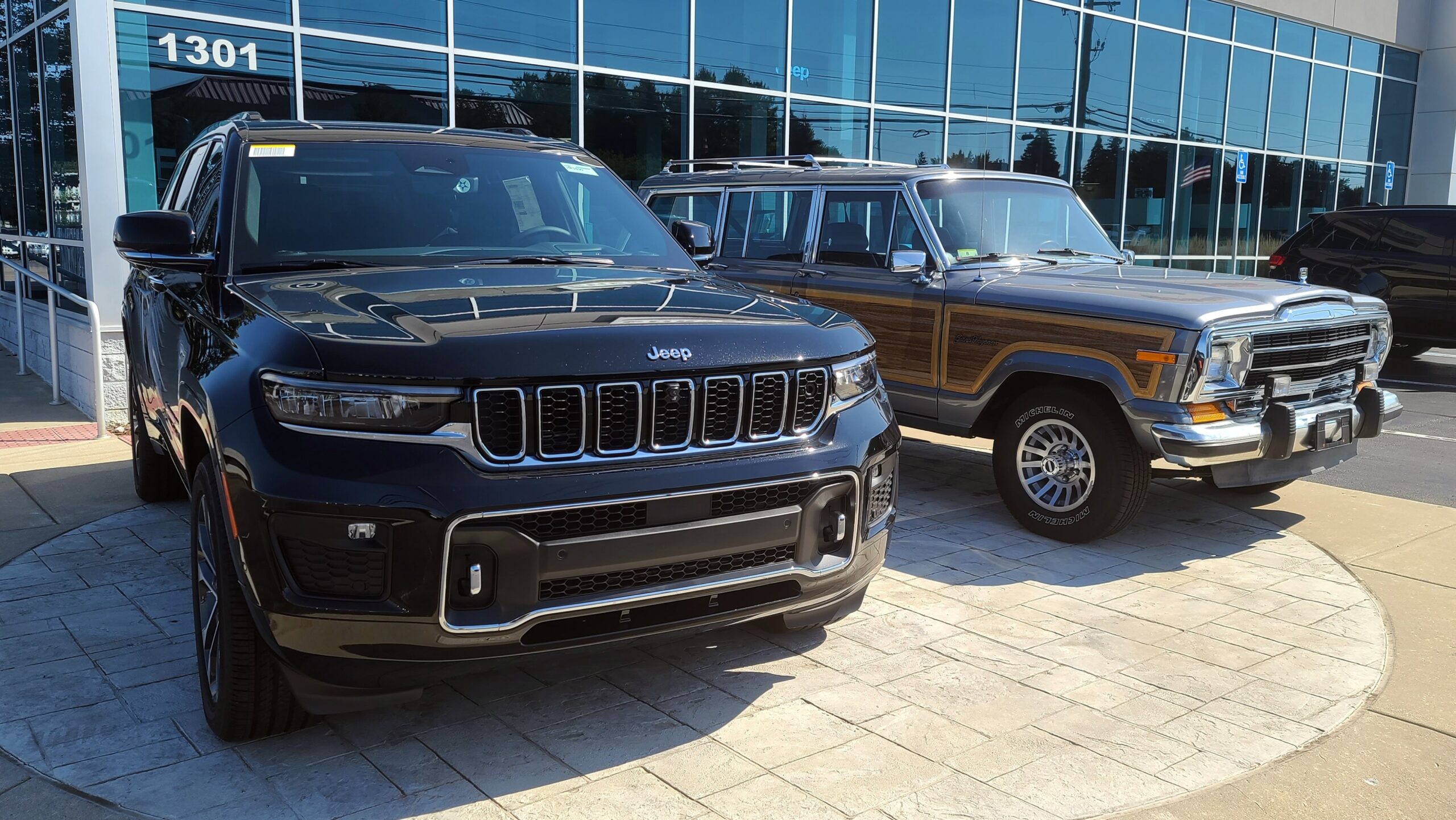
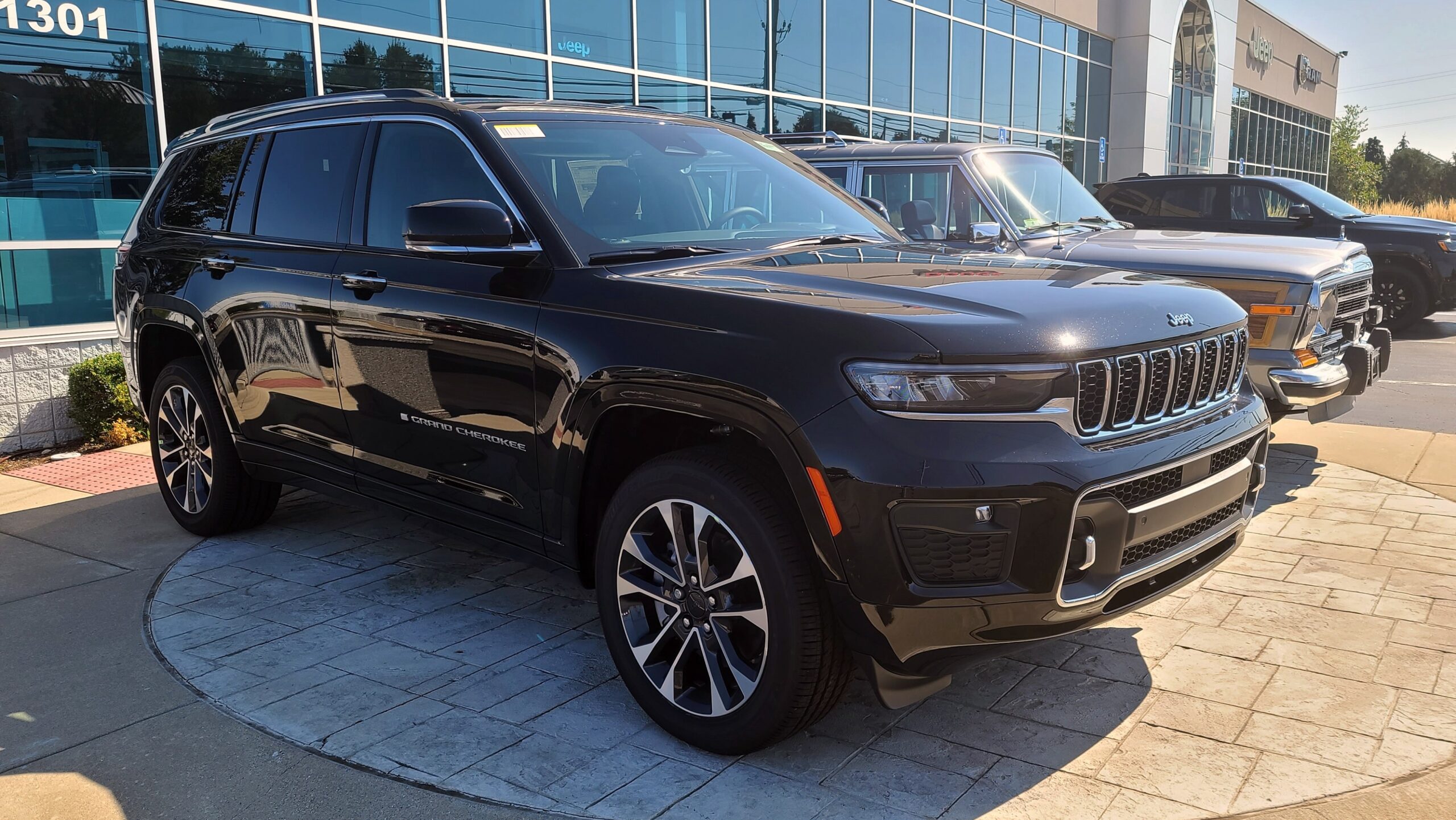

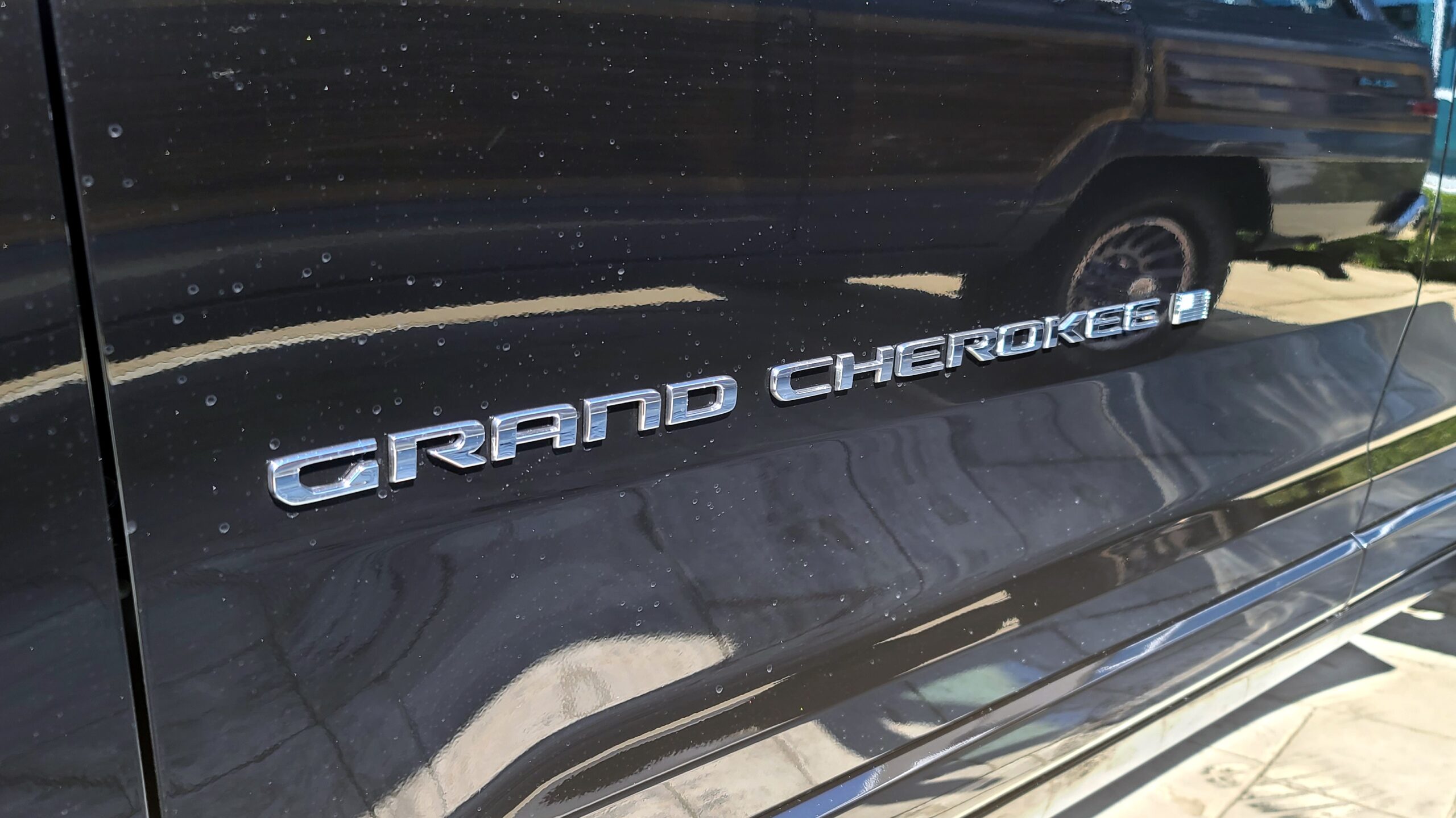
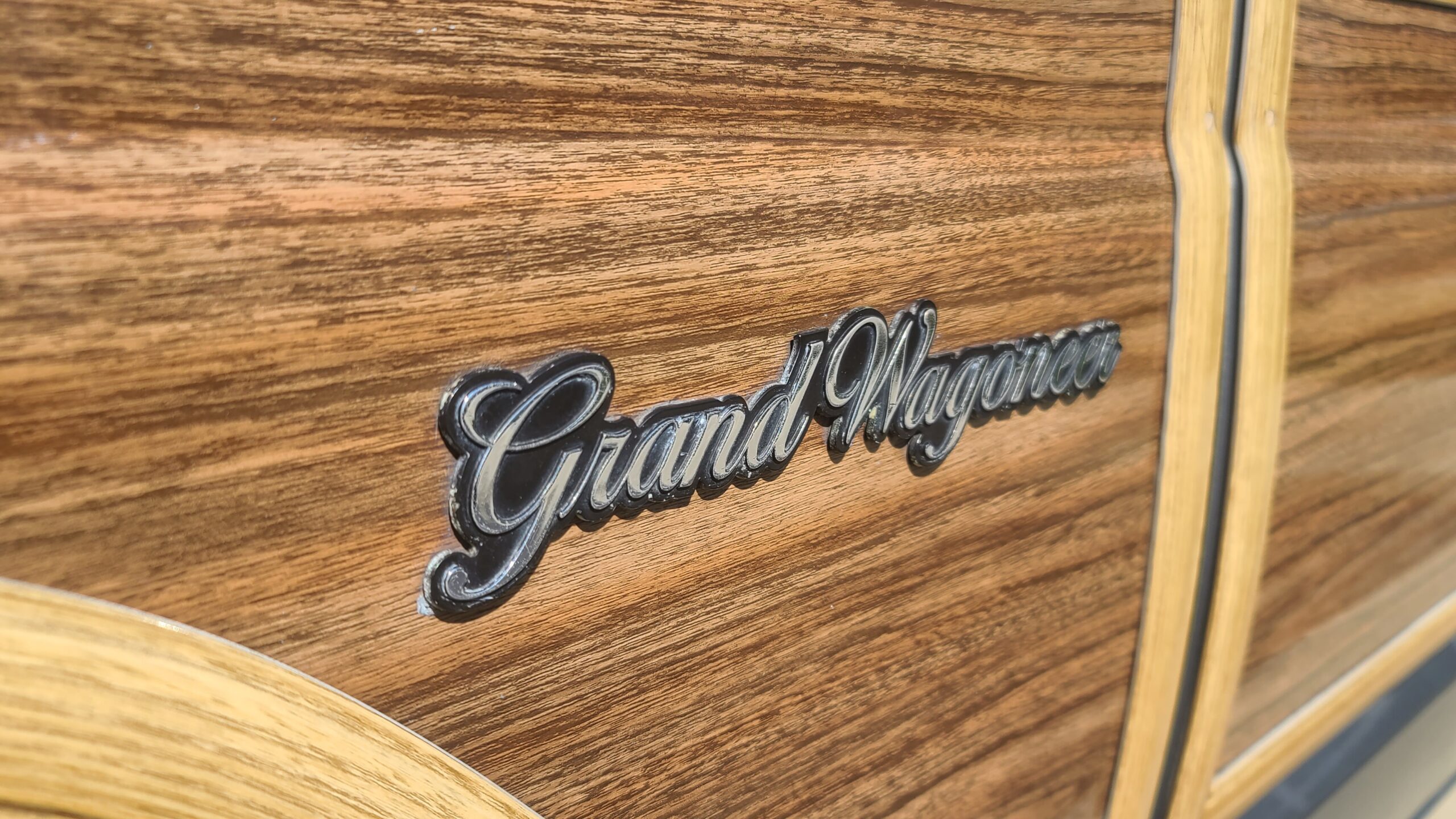
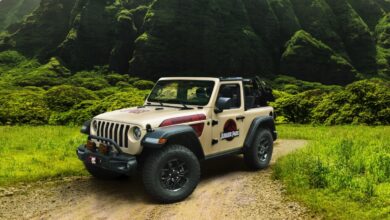

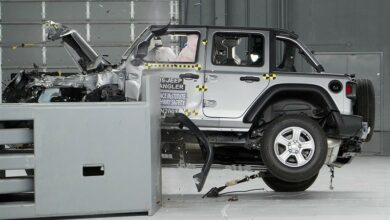
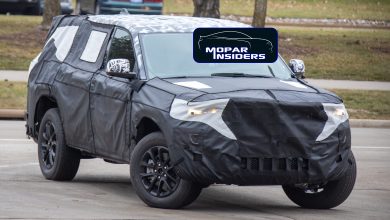

7 replies
Loading new replies...
Join the full discussion at the Mopar Insiders Forum →